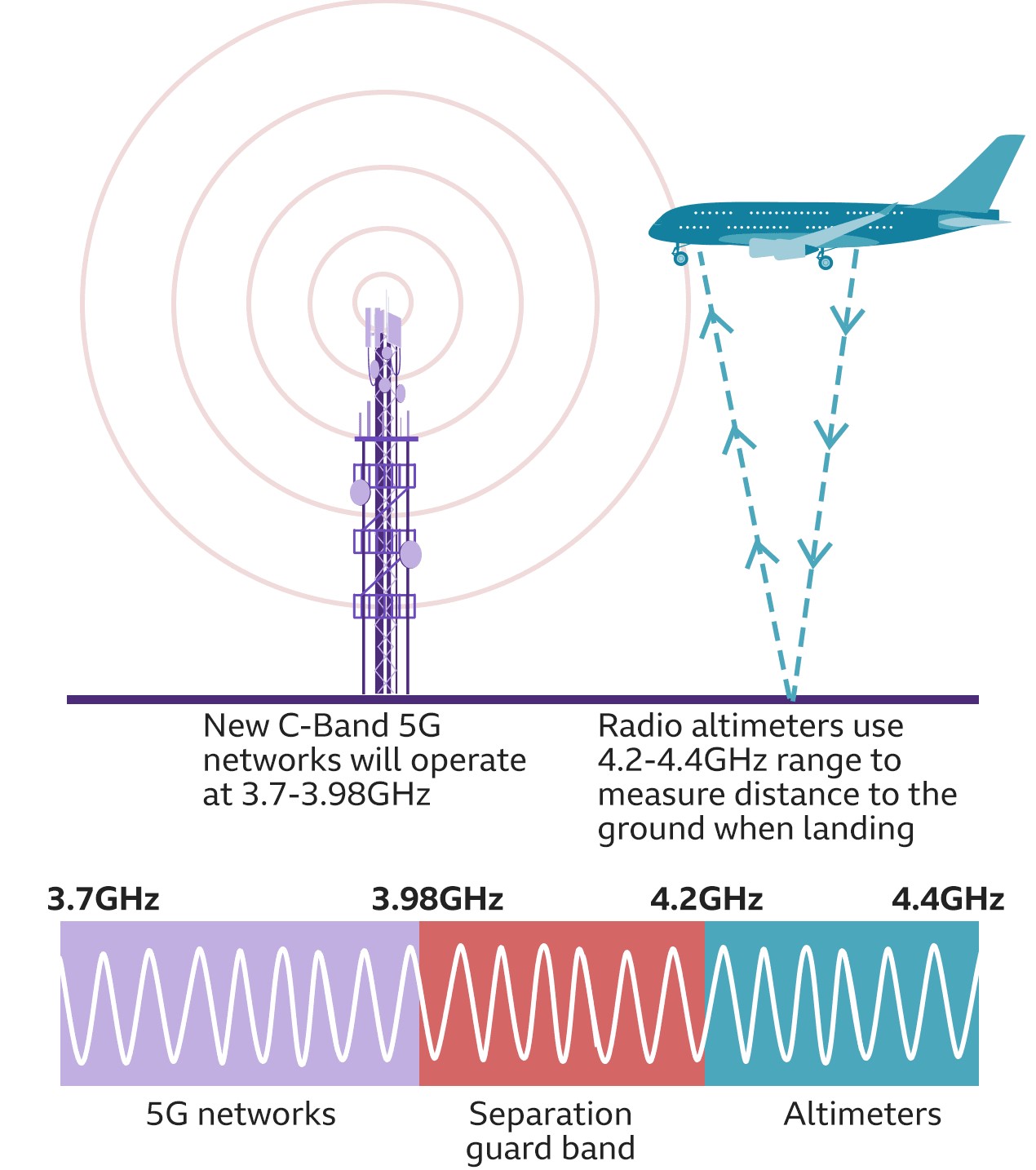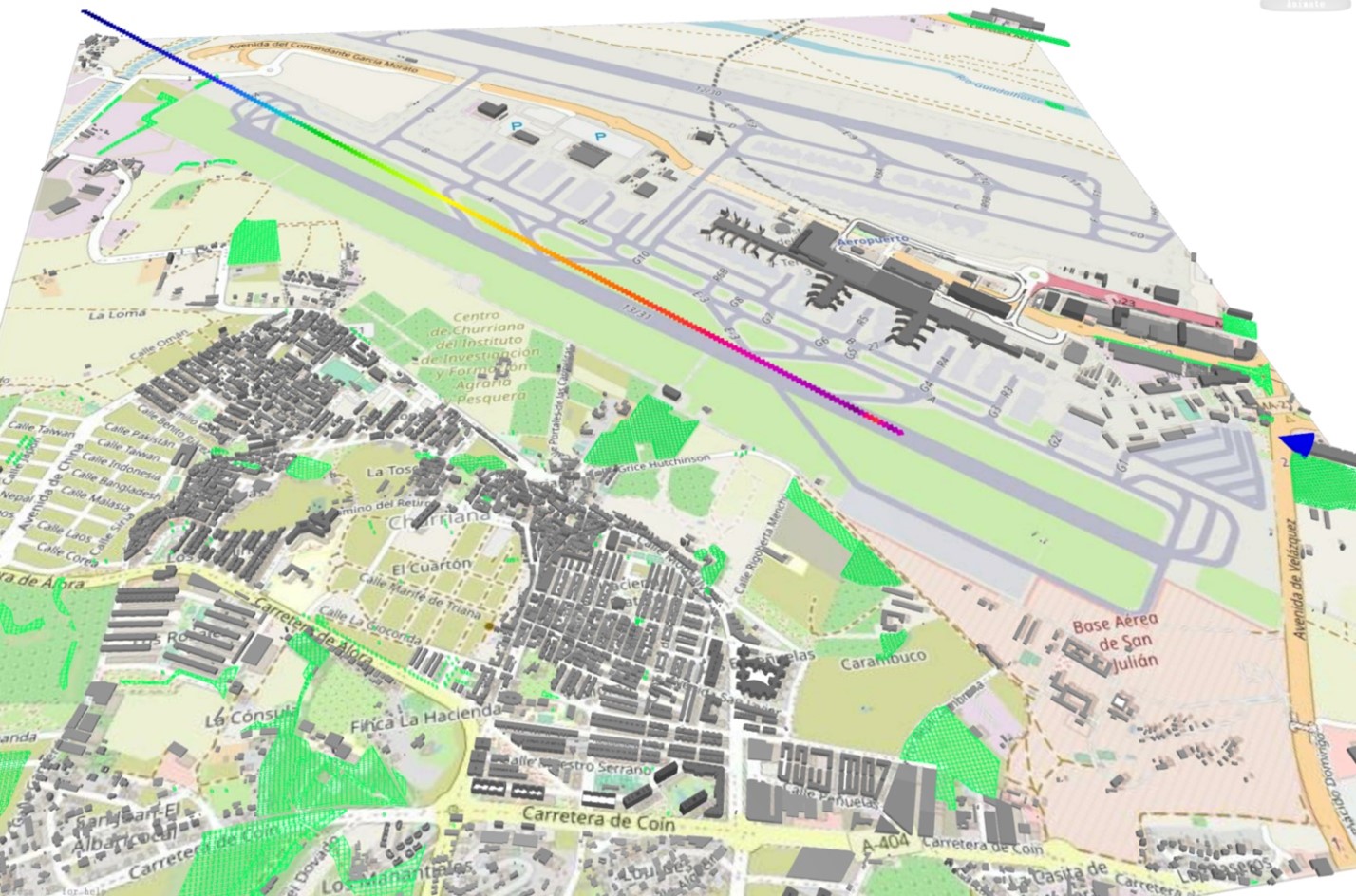Simulation to Handle and Predict 5G Interference During Aircraft Landing
Electromagnetic interference (EMI) refers to the disruption of a system’s operation due to an electromagnetic field created by the same or another electronic system. EMI is common and can affect any electronic system. Depending on what it’s affecting – from cell phones and aircraft to life-saving medical equipment – EMI can be a minor annoyance or a life-threating interruption. Because the number and complexity of electronic communication systems keeps growing, all those concurrent signals make EMI more likely.
The fifth generation of mobile technologies (5G) is no exception. On one hand, companies are deploying 5G everywhere and bringing with it exciting plans in 2022, from better connectivity and new devices, to autonomous cars and the Metaverse. But on the other hand, 5G deployments can cause serious EMI issues too, as was demonstrated recently in the U.S. when CEOs from major airlines warned that deploying the new 5G spectrum could cause catastrophic flight disruption across the country.
EMI is an issue that impacts airlines, airplanes, passengers, country aviation authorities, mobile phone users, and wireless network operators alike, and where two communications carriers spent $68.9 billion for these 5G frequencies (in part of the frequency spectrum known as C-band). In short, there’s a lot on the line for everyone involved, and everyone wants these technologies to function while keeping EMI to a minimum.
How Serious Can 5G EMI Issues Be on Aircraft?
5G technology relies on radio signals. The frequency of these signals in the C-band is close to those that radio altimeters on airplanes use; aircraft use these altimeters to measure the height of the aircraft above the ground and to provide data for safety and navigation systems. The EMI-related issue here is that 5G transmission interference could stop radio altimeters from working properly and cause safety problems, particularly when aircraft prepare to land.
More granularly, 5G C-band interference could degrade acceleration performance, increase landing distance, and cause possible runway excursion. And in worst-case scenarios, interference could cause a plane to run off the end of the runway. This situation isn’t unique to the U.S., but regulators from other countries have created measures that reduce interference risk. Some of these regulations deal with 5G base station antenna power and orientation, and others create 5G signal buffer zones. The latest U.S. safety regulations can be found here.

Can Electromagnetic Simulation Predict and Fix These Issues Preemptively?
Yes – and Altair’s 5G simulation solutions are well-suited to the task. To demonstrate, let’s consider a scenario where an airplane is approaching an airport to land, and a nearby 5G base station is located near the airport.
An important consideration: Regardless of approach and weather conditions, some aircraft could experience 5G EMI anomalies. As aviation regulators point out, these anomalies may not be evident until very low altitudes; additionally, these anomalies could affect flight control and warning systems. Auto throttle might increase thrust during the flare or reduce to idle prematurely, while thruster reverses or speed brakes might not deploy after landing. Engines might remain at the wrong thrust setting after touchdown or during rejected take-off. As a result, braking could be the only deceleration option, which increases the risk of an overrun, especially if engines are still operating above normal thrust settings or if the runway is contaminated. That said, we have set up a model that considers these very low altitudes from when an aircraft’s instruments start transmitting alerts, and we must also consider that aircraft receive regular warnings within the last mile.

Simulation Model and Results
In a typical airport scenario, a 5G base station sector (indicated in blue in the figure below) is placed outside but close to the airport area on a building roof to provide good 5G radio coverage in and around the airport. The simulation considers the typical 5G transmit power and antenna pattern. A sophisticated 3D ray-optical wave propagation model computes the 5G radio coverage and considers all objects – including buildings and vegetation – in the scenario. Based on assumptions for the radar altimeter receiver bandwidth and antenna gain, plus the 5G out-of-band and spurious emission limit as defined by the FCC, the 5G interference power as received by the radar altimeter on a typical landing approach has been computed. The figure below displays the corresponding results and shows the aircraft path in rainbow colors, which indicate the amount of interference the aircraft is encountering. As it approaches the ground and the 5G site, the interference power is getting larger (red and violet denote significant interference) and indicate the likelihood an altimeter will malfunction. Thanks to Altair’s simulation tools, aircraft manufacturers and airport flight controllers can see when and how 5G could potentially interfere with an aircraft’s on-board instruments, and how different 5G antenna locations could minimize interference risk.

EMI on 5G and More – Where We Are Going
Undoubtedly, 5G will keep deploying, growing, and facing more cases like this one. Whereas several years ago using electromagnetic simulation to prevent and address EMI issues was limited, this has changed and more organizations are using simulation earlier in the development phases to predict and fix potential interference problems. This rush to simulation is good news for 5G and for other technologies that overlap other industries like electrification and autonomous driving. To learn more about the technology and how Altair is ushering in the next generation of electromagnetic simulation, read our comprehensive e-guide on 5G and 6G product design.




